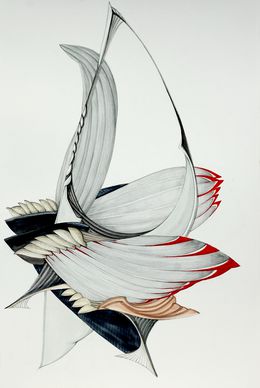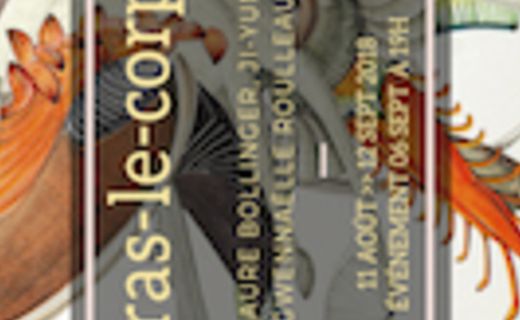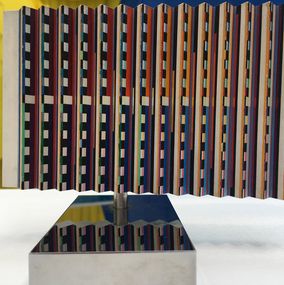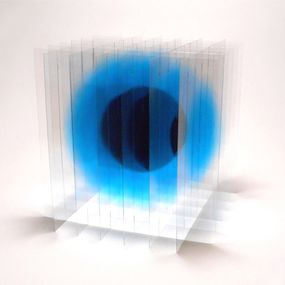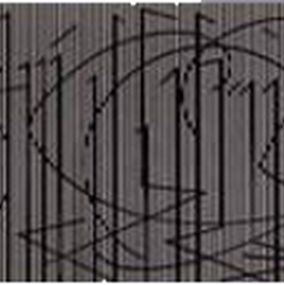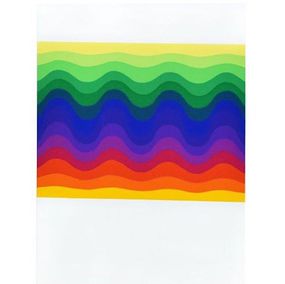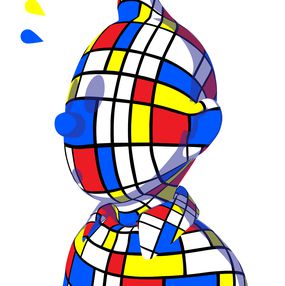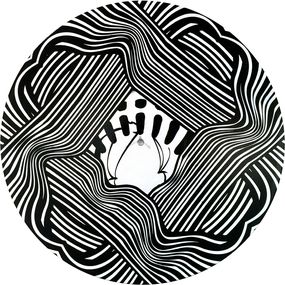

Biography
“Everything you're looking for is on the blank page. "
- My grandfather
Here is a sentence from my grandfather, a calligrapher, which deeply marked me. It can be interpreted in several ways, but as far as I'm concerned, it's an invitation to introspection, looking at the blank page is looking inside oneself.
As a Korean, I am obviously influenced by one of the main principles of Eastern thought: Yin and Yang, opposites which balance and coexist in all things. Some of my works are built from this principle of opposition, with a focus on areas of energy and others that remain empty, neglected ... This also explains the sparing use of color, the predominance black and white.
I also think I am indebted to traditional Korean painting which, unlike Western tradition, attaches little importance to composition. Where Western painting fills the entire frame and focuses on the details, the Korean ideal is to express a maximum of force in a few strokes, even if it means completely abandoning certain areas of the space. I think I work the same in my job, once the energy has been released in some places it doesn't have to be refilled. This also corresponds to a particular temporality, the creation being intimately linked to a brief, intense moment with no possible return.
On the other hand, whatever the medium I use (drawings, photo, installation, performance) I use the human body as a raw material and as a subject. Having lived all my childhood in a hospital where I had free time to wander, I got used to considering the body as a neutral and inanimate object, to treat it and use it as such in my works. The body can for example be staged in its entirety as a foreign object, or I use limbs, organs, to recompose abstract forms, hybrid objects.
Nationality
Categories
Artistic movements
Themes

Ji-Yun
Fine Art Drawings - 42 x 29.7 x 0.3 cm Fine Art Drawings - 16.5 x 11.7 x 0.1 inch
$976
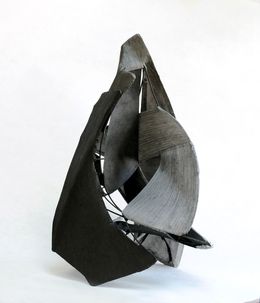

Ji-Yun
Fine Art Drawings - 40 x 29.7 x 0.01 cm Fine Art Drawings - 15.7 x 11.7 x 0 inch
$915
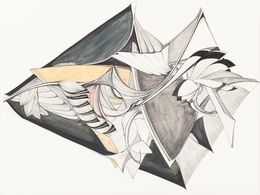
Ji-Yun
Fine Art Drawings - 30 x 40 x 0.2 cm Fine Art Drawings - 11.8 x 15.7 x 0.1 inch
$915
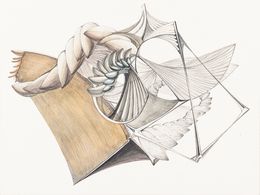
Ji-Yun
Fine Art Drawings - 30 x 40 x 0.2 cm Fine Art Drawings - 11.8 x 15.7 x 0.1 inch
$915

Ji-Yun
Fine Art Drawings - 40 x 30 x 0.2 cm Fine Art Drawings - 15.7 x 11.8 x 0.1 inch
$915




Ji-Yun
Fine Art Drawings - 30 x 39.7 x 0.2 cm Fine Art Drawings - 11.8 x 15.6 x 0.1 inch
$915

Ji-Yun
Fine Art Drawings - 42 x 29.7 x 0.3 cm Fine Art Drawings - 16.5 x 11.7 x 0.1 inch
$976

Ji-Yun
Fine Art Drawings - 42 x 29.7 x 0.3 cm Fine Art Drawings - 16.5 x 11.7 x 0.1 inch
$976

Ji-Yun
Fine Art Drawings - 42 x 29.7 x 0.3 cm Fine Art Drawings - 16.5 x 11.7 x 0.1 inch
$976

Ji-Yun
Fine Art Drawings - 29.7 x 42 x 0.3 cm Fine Art Drawings - 11.7 x 16.5 x 0.1 inch
$976

Ji-Yun
Fine Art Drawings - 42 x 29.7 x 0.3 cm Fine Art Drawings - 16.5 x 11.7 x 0.1 inch
$976

Ji-Yun
Fine Art Drawings - 29.7 x 42 x 0.3 cm Fine Art Drawings - 11.7 x 16.5 x 0.1 inch
$976

Ji-Yun
Fine Art Drawings - 42 x 29.7 x 0.3 cm Fine Art Drawings - 16.5 x 11.7 x 0.1 inch
$976

Ji-Yun
Fine Art Drawings - 29.7 x 42 x 0.3 cm Fine Art Drawings - 11.7 x 16.5 x 0.1 inch
$976

Ji-Yun
Fine Art Drawings - 42 x 29.7 x 0.3 cm Fine Art Drawings - 16.5 x 11.7 x 0.1 inch
$976

Ji-Yun
Fine Art Drawings - 42 x 29.7 x 0.3 cm Fine Art Drawings - 16.5 x 11.7 x 0.1 inch
$976

Ji-Yun
Fine Art Drawings - 30 x 19 x 0.2 cm Fine Art Drawings - 11.8 x 7.5 x 0.1 inch
$673

Ji-Yun
Fine Art Drawings - 30 x 40 x 0.2 cm Fine Art Drawings - 11.8 x 15.7 x 0.1 inch
$915

Ji-Yun
Fine Art Drawings - 30 x 40 x 0.2 cm Fine Art Drawings - 11.8 x 15.7 x 0.1 inch
$915



Ji-Yun
Fine Art Drawings - 60 x 80 x 0.2 cm Fine Art Drawings - 23.6 x 31.5 x 0.1 inch
$2,439

Ji-Yun
Fine Art Drawings - 40 x 29.7 x 0.3 cm Fine Art Drawings - 15.7 x 11.7 x 0.1 inch
$1,464

Ji-Yun
Fine Art Drawings - 80 x 60 x 0.3 cm Fine Art Drawings - 31.5 x 23.6 x 0.1 inch
$1,951




Ji-Yun
Fine Art Drawings - 80 x 60 x 0.3 cm Fine Art Drawings - 31.5 x 23.6 x 0.1 inch
$1,951
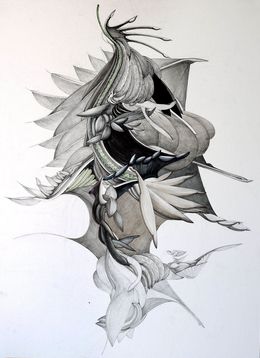
Ji-Yun
Fine Art Drawings - 78 x 56.5 x 0.3 cm Fine Art Drawings - 30.7 x 22.2 x 0.1 inch
$1,951

Ji-Yun
Fine Art Drawings - 80 x 60 x 0.3 cm Fine Art Drawings - 31.5 x 23.6 x 0.1 inch
$1,951

Ji-Yun
Fine Art Drawings - 82.5 x 58 cm Fine Art Drawings - 32.5 x 22.8 inch
$1,951
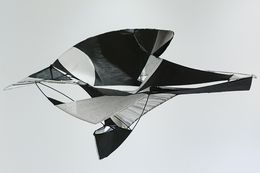


Ji-Yun
Fine Art Drawings - 60 x 80 x 0.2 cm Fine Art Drawings - 23.6 x 31.5 x 0.1 inch
$2,439

Ji-Yun
Fine Art Drawings - 42 x 29.7 x 0.3 cm Fine Art Drawings - 16.5 x 11.7 x 0.1 inch
Sold
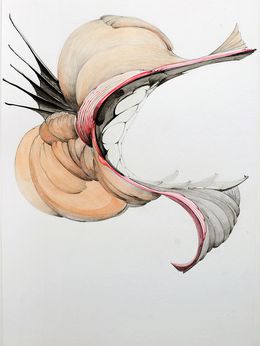
Ji-Yun
Fine Art Drawings - 42 x 29.7 x 0.3 cm Fine Art Drawings - 16.5 x 11.7 x 0.1 inch
Sold

Ji-Yun
Fine Art Drawings - 42 x 29.7 x 0.3 cm Fine Art Drawings - 16.5 x 11.7 x 0.1 inch
Sold
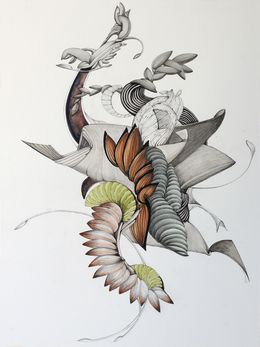
Ji-Yun
Fine Art Drawings - 42 x 29.7 x 0.3 cm Fine Art Drawings - 16.5 x 11.7 x 0.1 inch
Sold
